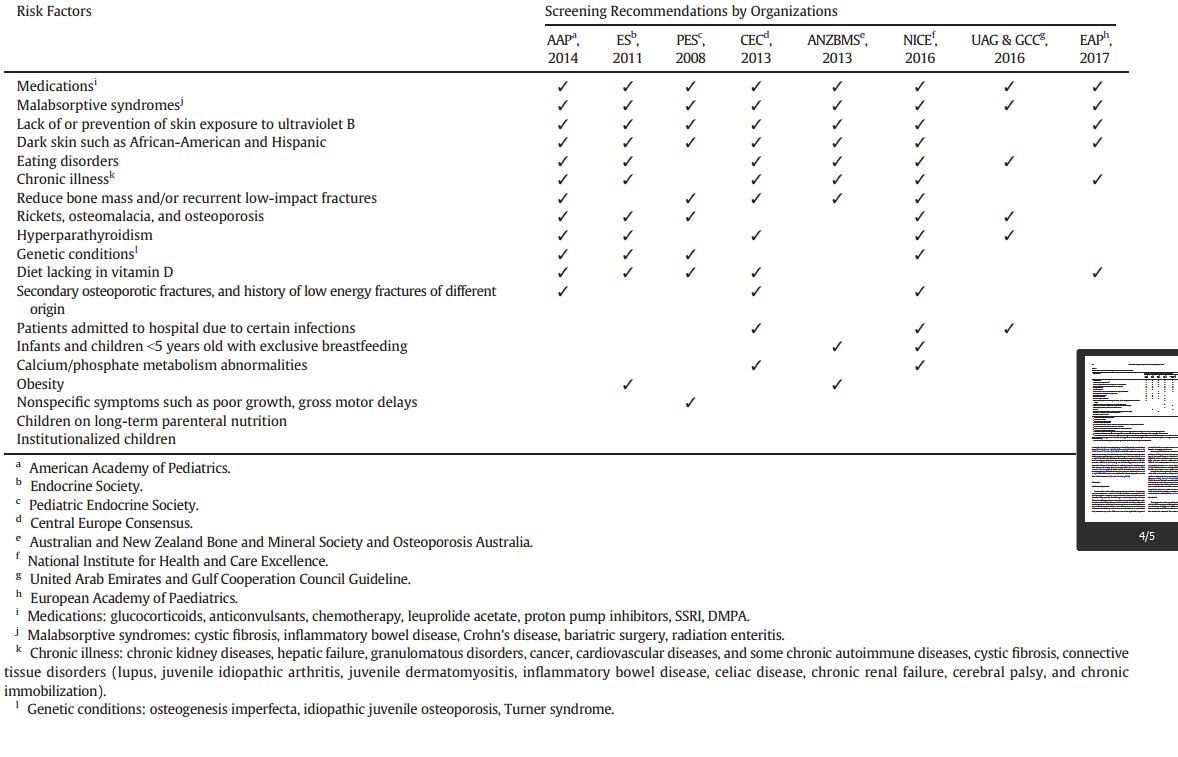Which children need Vitamin D tests (no consensus, should give Vit D to all)
Vitamin D screening variations in children and adolescents: Who should be screened?
Journal of Pediatric Nursing, Volume 45, March–April 2019, Pages 57-61, https://doi.org/10.1016/j.pedn.2019.02.002
Renée L. Davis DNP, RN, CPNP-PCaAlongkorn Aksornsri MNS, Rnb Michelle M.Papachrisanthou DNP, RN, CPNP-PCc
📄 Download the PDF from Sci-Hub via VitaminDWiki

Highlights
Early vitamin D deficiency detection can improve the health of children.
Vitamin D screening recommendations are based on risk factors.
No consensus on vitamin D deficiency screening in children and adolescents exists.
Problem: No consensus on vitamin D deficiency (VDD) screening in children and adolescents exists. Early VDD detection can improve the health of children. VDD can cause bone mineralization diseases, such as rickets in children. The purpose of this review is to determine existing VDD screening recommendations or clinical practice guidelines in children and adolescents.
Eligibility criteria: Inclusion criteria were VDD screening ‘guideline’, ‘clinical practice guideline’, and ‘recommendations’ for children and adolescents in English, published 2001–2018.
Results: Eight current guidelines addressed VDD screening recommendations with the common recommendation results endorsing screening only for VDD in at-risk children and adolescents.
Conclusions: There is insufficient evidence for pediatric healthcare providers to recommend which VDD risk factors should be utilized for screening in children and adolescents.
Implications: Further studies should focus on developing a validated VDD screening tool for children and adolescents based on risk factors.
